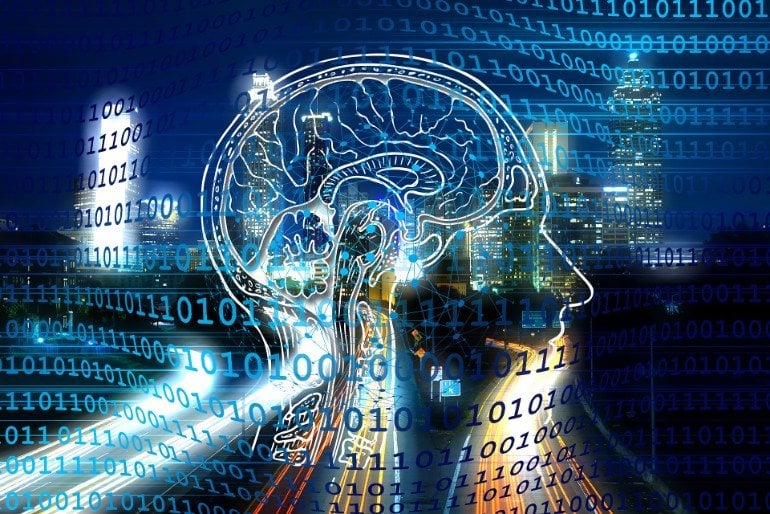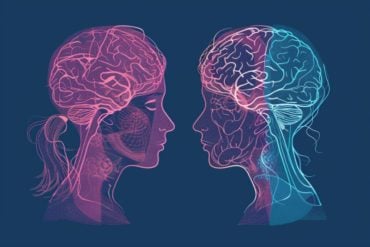Summary: A new AI system helps researchers better understand the brain computations that underlie thought.
Source: Baylor University
A team led by researchers at Baylor College of Medicine and Rice University has developed artificial intelligence (AI) models that help them better understand the brain computations that underlie thoughts. This is new, because until now there has been no method to measure thoughts. The researchers first developed a new model that can estimate thoughts by evaluating behavior, and then tested their model on a trained artificial brain where they found neural activity associated with those estimates of thoughts. The theoretical study appears in the Proceedings of the National Academy of Sciences.
“For centuries, neuroscientists have studied how the brain works by relating brain activity to inputs and outputs. For instance, when studying the neuroscience of movement, scientists measure muscle movements as well as neuronal activity, and then relate those two measurements,” said corresponding author Dr. Xaq Pitkow, assistant professor of neuroscience at Baylor and of electrical and computer engineering at Rice. “To study cognition in the brain, however, we don’t have anything to compare the measured neural activity to.”
To understand how the brain gives rise to thought, researchers first need to measure a thought. They developed a method called “Inverse Rational Control” that looks at a behavior and infers the beliefs or thoughts that best explain that behavior.
Traditionally, researchers in this field have worked with the idea that animals solve tasks optimally, behaving in a way that maximizes their net benefits. But when scientists study animal behavior, they find that this is not always the case.
“Sometimes animals have ‘wrong’ beliefs or assumptions about what’s going on in their environment, but still they try to find the best long-term outcomes for their task, given what they believe is going on around them. This could account for why animals seem to behave suboptimally,” said Pitkow, who also is a McNair Scholar at Baylor, co-director of Baylor’s Center for Neuroscience and Artificial Intelligence and member of the Rice Neuroengineering Initiative.
For example, consider an animal that is hunting and hears many noises it associates with prey. If one potential prey is making all the noises, the optimal behavior for the hunter is to consistently target its movements to a single noise. If the hunter mistakenly believes the noises are coming from many different animals, it may choose a suboptimal behavior, like constantly scanning its surroundings to try and pinpoint one of them. By acting according to its belief or assumption that there are many potential prey nearby, the hunter is behaving in a way that is simultaneously ‘rational’ and ‘suboptimal.’
In the second part of the work, Pitkow and his colleagues developed a model to relate the thoughts that were identified using the Inverse Rational Control method to brain activity.

“We can look at the dynamics of the modeled thoughts and at the dynamics of the brain’s representations of those thoughts. If those dynamics run parallel to each other, then we have confidence that we are capturing the aspects of the brain computations involved in those thoughts,” Pitkow said. “By providing methods to estimate thoughts and interpret neural activity associated with them, this study can help scientists understand how the brain produces complex behavior and provide new perspectives on neurological conditions.”
Other contributors to this work include Zhengwei Wu, Minhae Kwon, Saurabh Daptardar and Paul Schrater. The authors are affiliated with one or more of the following institutions: Baylor College of Medicine, Rice University, Soongsil University, Google Maps, and the University of Minnesota.
Funding: This work was supported in part by in part by BRAIN Initiative grant NIH 5U01NS094368, an award from the McNair Foundation, the Simons Collaboration on the Global Brain award 324143, the National Science Foundation award 1450923 BRAIN 43092 and NSF CAREER Award IOS-1552868.
About this AI research news
Source: Baylor University
Contact: Press Office – Baylor University
Image Source: The image is in the public domain
Original Research: Closed access.
“Rational thoughts in neural codes” by Zhengwei Wu, Minhae Kwon, Saurabh Daptardar, Paul Schrater, Xaq Pitkow. PNAS
Abstract
Rational thoughts in neural codes
Complex behaviors are often driven by an internal model, which integrates sensory information over time and facilitates long-term planning to reach subjective goals. A fundamental challenge in neuroscience is, How can we use behavior and neural activity to understand this internal model and its dynamic latent variables? Here we interpret behavioral data by assuming an agent behaves rationally—that is, it takes actions that optimize its subjective reward according to its understanding of the task and its relevant causal variables. We apply a method, inverse rational control (IRC), to learn an agent’s internal model and reward function by maximizing the likelihood of its measured sensory observations and actions. This thereby extracts rational and interpretable thoughts of the agent from its behavior. We also provide a framework for interpreting encoding, recoding, and decoding of neural data in light of this rational model for behavior. When applied to behavioral and neural data from simulated agents performing suboptimally on a naturalistic foraging task, this method successfully recovers their internal model and reward function, as well as the Markovian computational dynamics within the neural manifold that represent the task. This work lays a foundation for discovering how the brain represents and computes with dynamic latent variables.






